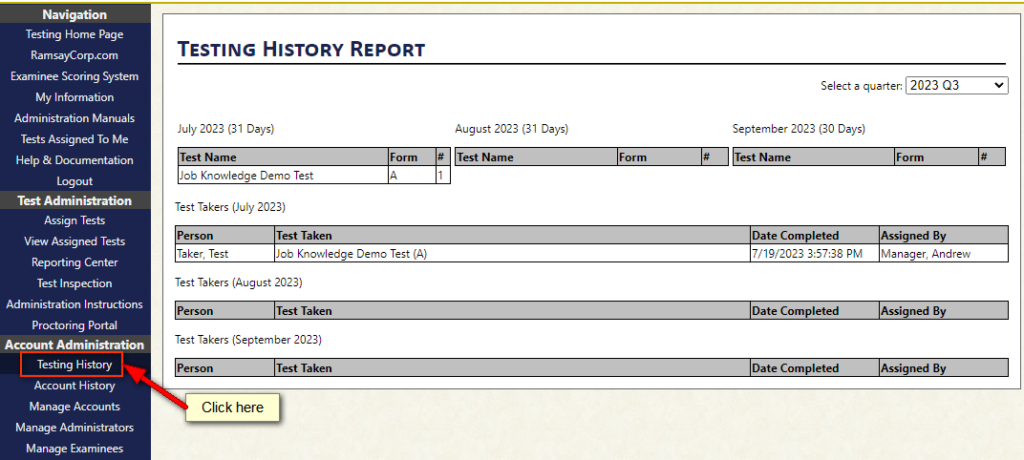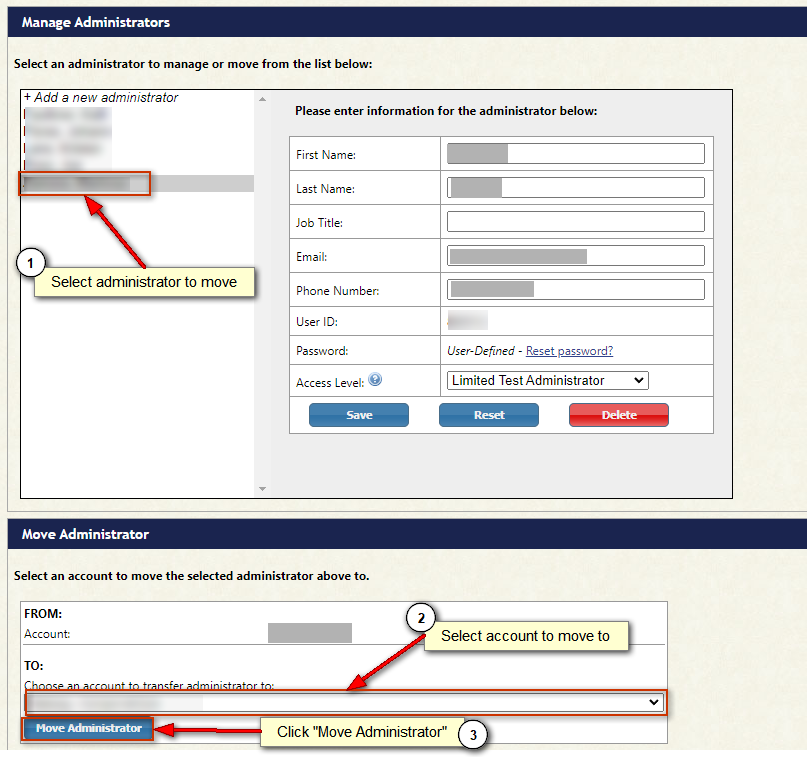Q: What are Custom-Organizational Groups?
A: Custom-organizational groups are groupings of accounts that may or may not share results with each other. This is typically set up to the benefit of our clients who may have an assessment solution validated with us. Custom-organizational groups also provide the customization of a pre-testing survey.
Examples of implementations can be found below:
Example: Company A
- Company A has 140 locations, each location is set up as a subaccount of Corporate.
- Company A’s retesting policy is as follows: a “pass” is valid for 1 year; a “fail” is eligible for retesting in 6 months.
- Tests are valid for all locations.
- Employees at any location may apply to any other location.
- Company A has a shared custom-organizational group set up. This allows any group member to access results of any other group member, thus allowing each location to search other locations’ candidates to verify their test results.
Example: Company B
- Company B has 4 locations and wants to use assessments for a number of reasons, including gauging new-hires and diagnosing existing employees.
- Among employees, some groups may use the same tests with different cut scores.
- Company B is set up with two tiers under the corporate account.
- First tier contains each location as a separate subaccount.
- Each location subaccount has a number of groups set up as subaccounts.
Finally, Company B corporate would like to see pass rates across all locations for each job.
Solution:
Company B sets up a custom-organizational group for each of the jobs across each location.
Each custom-organizational group has its own set of survey questions that can be used as fields to filter later in the reports.
Custom-organizational groups are set up as not-shared, as locations do not need to be able to access each others’ results.
Q: What are the costs involved in setting up a custom-organizational group?
A: Clients who have validated a test with us can utilize this system at no additional cost. This feature is also available to companies who have purchased an Enterprise Subscription with us.
Q: How do I create or edit my custom-organizational group or my survey fields?
A: Please email Ramsay Corporation’s IT department with requests to create new custom-organizational groups (itgroup@ramsaycorp.com).
If you wish to edit your custom-organizational group, please use the Manage Custom Fields item from the Navigation menu. If it is not available to you, you may not have permissions to manage the custom-organizational groups or the survey fields.




